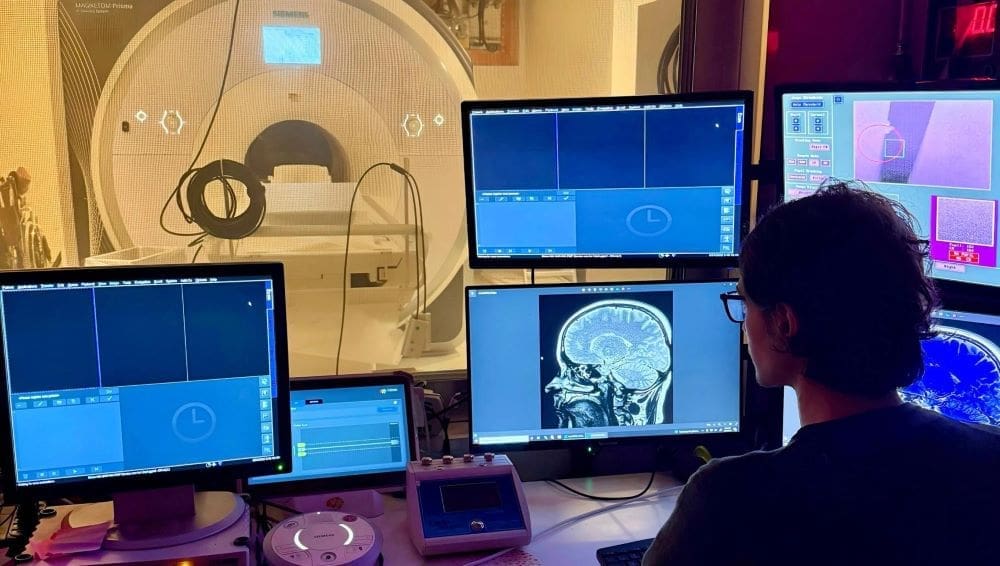Summary:
Children exposed to both a natural disaster and extreme heat while in the womb may show measurable changes in brain structure years later, according to a new study published in PLOS One. Researchers from the City University of New York (CUNY) Graduate Center and Queens College examined how in utero exposure to Superstorm Sandy, alongside at least one day of extreme heat, shaped brain development in children.
The team analyzed MRI scans from 34 eight-year-olds whose mothers were pregnant during the 2012 storm and compared them to children without such prenatal exposure. They found that children exposed to both types of climate stressors had significantly larger volumes in the basal ganglia, a part of the brain involved in emotion regulation.
While earlier studies have examined the effects of either heat or disaster-related stress, this research focuses on their combined impact, suggesting a cumulative effect. “We’re seeing how climate change may be reshaping the next generation’s brains before they even take their first breath,” said lead author Donato DeIngeniis, a psychology Ph.D. student at CUNY Graduate Center. The findings raise new concerns about the neurological toll of increasingly common extreme weather events, particularly on populations already vulnerable during pregnancy.

Exposure to multiple extreme climate events during pregnancy may have a cumulative effect on child brain development
Climate disasters may be leaving invisible imprints on developing brains before birth, according to new groundbreaking research from The City University of New York Graduate Center (CUNY Graduate Center) and Queens College. Scientists discovered that children whose mothers experienced Superstorm Sandy during pregnancy showed distinct brain differences that could affect their emotional development for years to come.
The study reveals that prenatal exposure to extreme climate events, particularly when combined with extreme heat, appears to rewrite critical emotion regulation centers in the developing brain.
“We’re seeing how climate change may be reshaping the next generation’s brains before they even take their first breath,” said lead author Donato DeIngeniis, a CUNY Graduate Center Psychology Ph.D. student. “These children’s brains bear invisible scars from climate disasters they never personally experienced.”
Climate Change in the Womb
The research team analyzed brain imaging data from a group of 8-year-old children whose mothers were pregnant during Superstorm Sandy, which devastated parts of New York and other coastal regions in 2012. The scans revealed that children exposed to the storm in utero had significantly larger volumes in the basal ganglia, deep brain structures involved in emotion regulation.
“The combination of storm stress and extreme heat created a perfect neurological storm in developing brains,” explained Professor Yoko Nomura, principal investigator of the Stress in Pregnancy (SIP) Study and Psychology professor at the CUNY Graduate Center and Queens College. “We found that while extreme heat alone didn’t significantly alter brain volume, when combined with the stress of living through a major storm during pregnancy, it amplified the effects dramatically.”
The research involved MRI scans of 34 children, comparing those exposed to the storm and/or extreme heat (defined as at least one day above 95 °F [35 °C] during pregnancy) to those who were not. The findings could have profound implications for children growing up in regions increasingly affected by climate change.
Lifelong Effects
“As extreme weather events become more frequent and severe, we need to consider the invisible toll on future generations,” DeIngeniis noted. “Our findings suggest we must develop targeted interventions to support pregnant women during climate disasters and strengthen climate resilience in vulnerable communities.”
Duke Shereen, Ph.D., director of the Magnetic Resonance Imaging facility at the Advanced Science Research Center at the CUNY Graduate Center and a co-author of the study, emphasized the long-term implications of the findings: “These imaging techniques allow us to visualize how environmental stressors can cascade through maternal experience to alter the architecture of the developing brain. What we are seeing is compelling evidence that the climate crisis is not just an environmental emergency, it is potentially a neurological one with consequence for future generations who will inherit our planet.”
Journal Reference:
DeIngeniis D, Blum M, Lee RM, Shereen AD, Nomura Y, ‘Prenatal exposure to extreme ambient heat may amplify the adverse impact of Superstorm Sandy on basal ganglia volume among school-aged children’, PLoS One 20 (6): e0324150 (2025). DOI: 10.1371/journal.pone.0324150
Article Source:
Press Release/Material by The Graduate Center | CUNY
Featured image: Neuroimaging research lead prepares MRI scanner for child brain imaging study. Credit: Rebecca M. Lee and Abid Fahim




